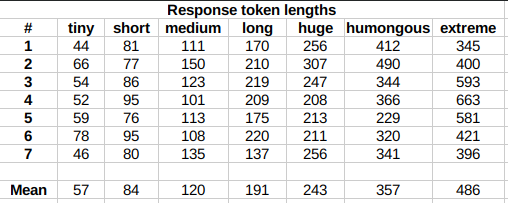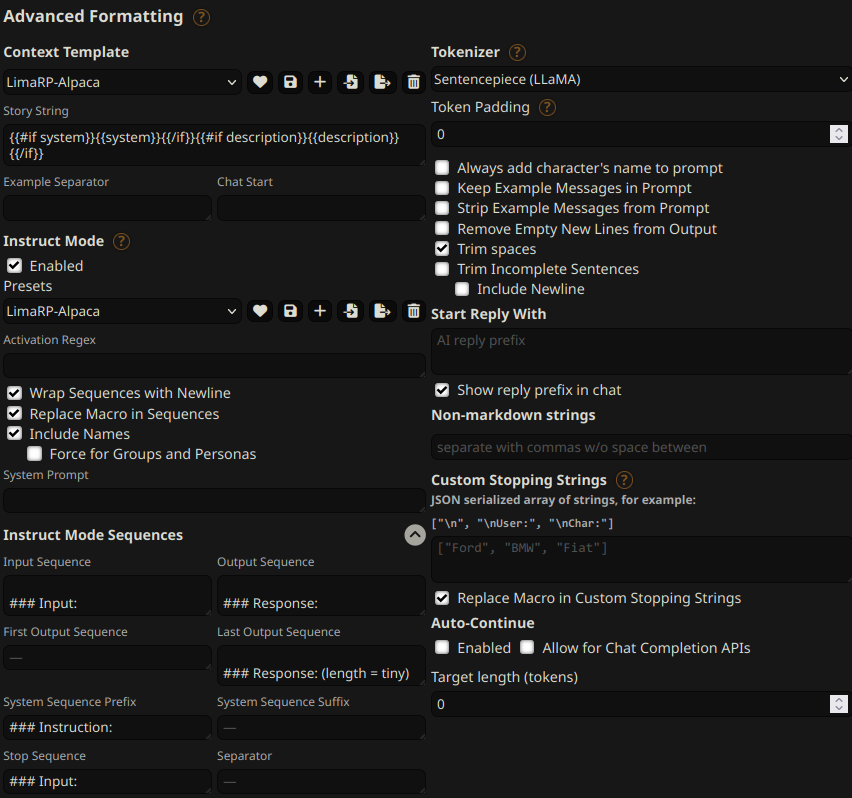File size: 3,921 Bytes
e3fcfd2 b6b58c1 787e4a2 5d3a66c a23656e b6b58c1 1ae8a82 b6b58c1 8670993 b6b58c1 1ae8a82 b6b58c1 d4d8be6 8663a86 dbdd42b b6b58c1 1ae8a82 d4d8be6 b46d4b0 d4d8be6 cb889ba 61485de d4d8be6 3b655e6 d4d8be6 6728812 3b655e6 6728812 d4d8be6 6728812 d4d8be6 23bb4d7 e315c19 7f1630d b6b58c1 23bb4d7 d4d8be6 23bb4d7 b6b58c1 23bb4d7 d4d8be6 e315c19 d4d8be6 |
1 2 3 4 5 6 7 8 9 10 11 12 13 14 15 16 17 18 19 20 21 22 23 24 25 26 27 28 29 30 31 32 33 34 35 36 37 38 39 40 41 42 43 44 45 46 47 48 49 50 51 52 53 54 55 56 57 58 59 60 61 62 63 64 65 66 67 68 69 70 71 72 73 74 75 76 77 78 79 80 81 82 83 84 85 86 87 88 89 90 91 92 93 94 95 96 97 98 99 100 101 102 103 104 105 106 107 108 109 110 111 112 113 114 115 116 |
---
license: apache-2.0
---
# LimaRP-Llama2-7B-v3 (Alpaca, experimental, 4-bit LoRA adapter)
This is an experimental version of LimaRP for Llama2 with an updated dataset (1800 training samples)
and a 2-pass training procedure. The first pass includes unsupervised finetuning on 2800 stories within
4k tokens length and the second pass is LimaRP with changes introducing more effective control on response length.
For more details about LimaRP, see the model page for the [previously released version](https://huggingface.co/lemonilia/limarp-llama2-v2).
Most details written there apply for this version as well.
## Prompt format
Same as before. It uses the [extended Alpaca format](https://github.com/tatsu-lab/stanford_alpaca),
with `### Input:` immediately preceding user inputs and `### Response:` immediately preceding
model outputs. While Alpaca wasn't originally intended for multi-turn responses, in practice this
is not a problem; the format follows a pattern already used by other models.
```
### Instruction:
Character's Persona: {bot character description}
User's Persona: {user character description}
Scenario: {what happens in the story}
Play the role of Character. You must engage in a roleplaying chat with User below this line. Do not write dialogues and narration for User.
### Input:
User: {utterance}
### Response:
Character: {utterance}
### Input
User: {utterance}
### Response:
Character: {utterance}
(etc.)
```
You should:
- Replace all text in curly braces (curly braces included) with your own text.
- Replace `User` and `Character` with appropriate names.
### Message length control
Inspired by the previously named "Roleplay" preset in SillyTavern, starting from this
version of LimaRP it is possible to append a length modifier to the response instruction
sequence, like this:
```
### Input
User: {utterance}
### Response: (length = medium)
Character: {utterance}
```
This has an immediately noticeable effect on bot responses. The available lengths are:
`tiny`, `short`, `medium`, `long`, `huge`, `humongous`, `extreme`, `unlimited`. **The
recommended starting length is `medium`**. Keep in mind that the AI may ramble
or impersonate the user with very long messages.
The length control effect is reproducible, but the messages will not necessarily follow
lengths very precisely, rather follow certain ranges on average, as seen in this table
with data from tests made with one reply at the beginning of the conversation:

Response length control appears to work well also deep into the conversation.
## Suggested settings
You can follow these instruction format settings in SillyTavern. Replace `tiny` with
your desired response length:

## Training procedure
[Axolotl](https://github.com/OpenAccess-AI-Collective/axolotl) was used for training
on a single NVidia RTX3090 GPU. The model has been trained as a 4-bit LoRA adapter, and
it's so large because a LoRA rank of 256 was also used. The reasoning was that this
might have helped the model internalize any newly acquired information, making the
training process closer to a full finetune.
It's suggested to merge the adapter to the base Llama2-7B model (or other Llama2-based
models).
### Training hyperparameters
For the first pass these settings were used:
- learning_rate: 0.0002
- lr_scheduler_type: constant
- lora_r: 256
- lora_alpha: 16
- lora_dropout: 0.1
- lora_target_linear: True
- num_epochs: 1
- bf16: True
- tf32: True
- load_in_4bit: True
- adapter: qlora
- micro_batch_size: 2
- gradient_accumulation_steps: 1
- optimizer: adamw_torch
In the second pass, the `lora_model_dir` option was used to load and train the adapter
previously trained on a stories dataset. These settings were also changed:
- lora_dropout: 0.0
- micro_batch_size: 1
- gradient_accumulation_steps: 8
- learning_rate: 0.0006 |